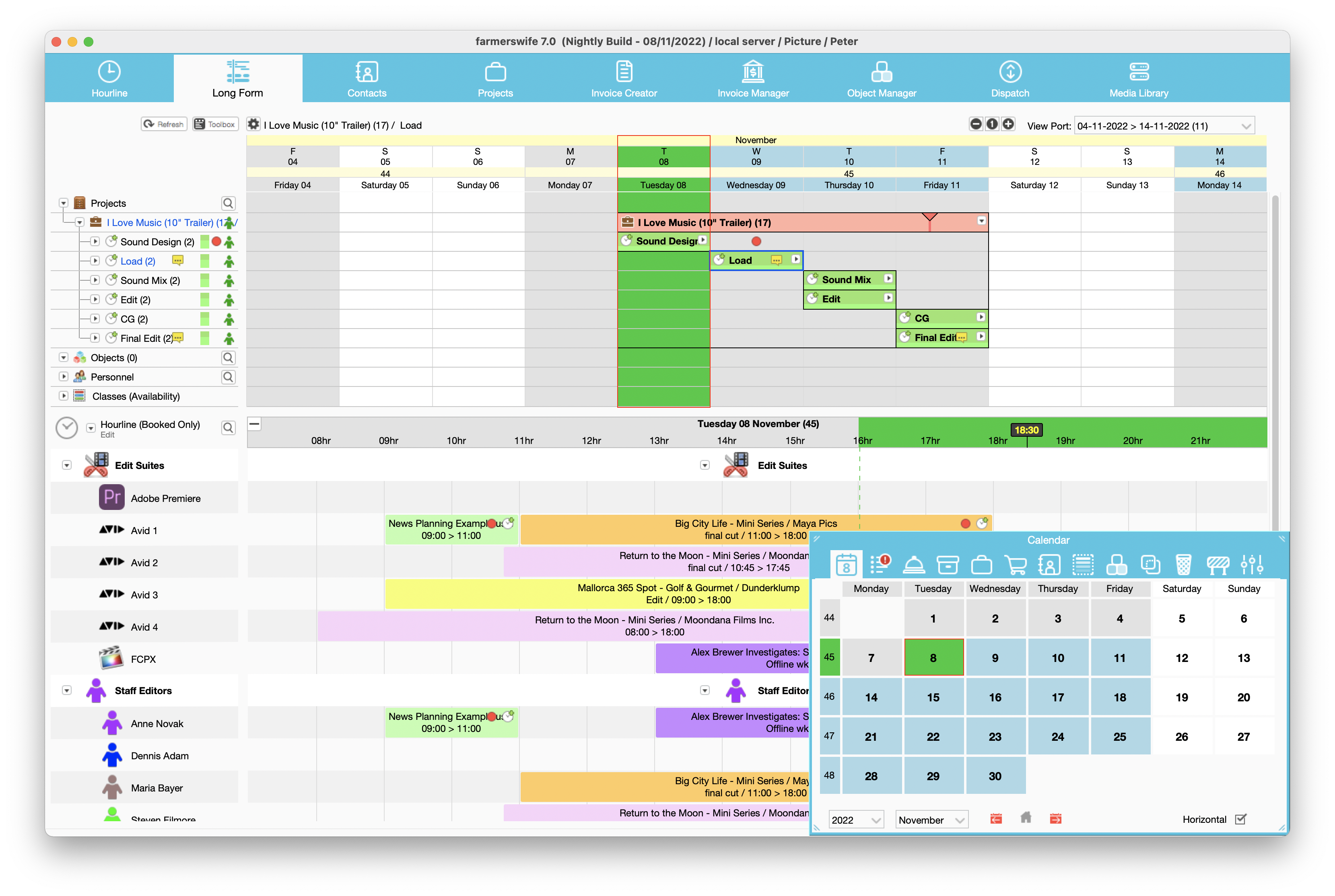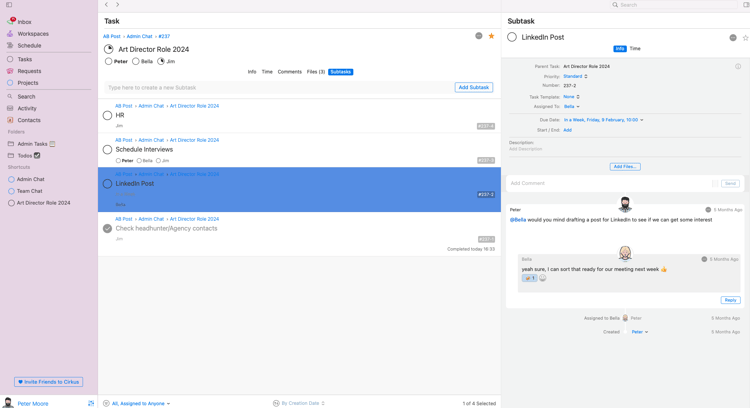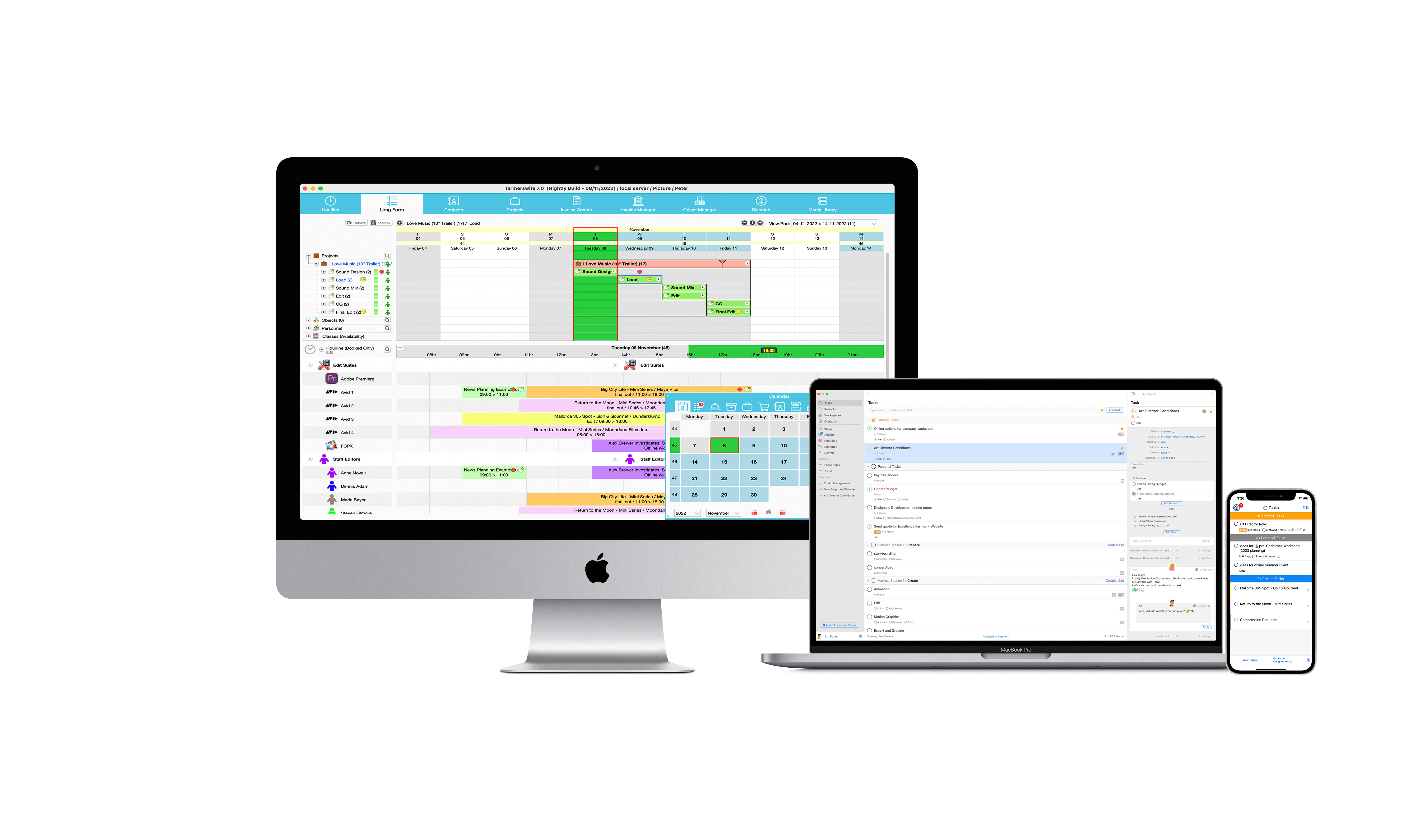In the realm of project management, the term "workstream" holds significant importance. What is workstream? It's not just a buzzword; rather, it's a fundamental concept that drives the efficiency and success of projects across various industries. In this article, we'll delve into the meaning of workstreams, explore their different types, understand their advantages, and discuss best practices for effective implementation. Moreover, we'll see how software solutions like farmerswife and Cirkus play a crucial role in optimizing workstreams for enhanced project outcomes.
What Is a Work Stream?
A workstream is a delineated portion of work within a project that focuses on specific objectives, tasks, or outcomes. It essentially represents a distinct pathway through which work progresses towards project completion. Workstream project management involves breaking a large project into smaller, more manageable tasks, ensuring that each workstream is aligned with the overall goals.
Workstreams can manifest in diverse forms, tailored to the unique requirements of each project. Workstream examples include development workstreams for software projects, marketing workstreams for product launches, or operational workstreams for process improvements.
Why Are Workstreams Important?
Workstreams are crucial in project management because they provide clarity and organization. By breaking a project into distinct workstreams, you avoid confusion, overlapping tasks, and delays. Workstreams ensure that teams stay focused on their specific objectives, improving efficiency and accountability. They also promote transparency, allowing stakeholders to track progress and address potential issues quickly. In essence, workstreams help streamline processes, clarify responsibilities, and keep projects on track.
Examples of Workstreams
Here is an example of how to create a Work Stream Plan for Film Production:
Pre-Production Workstream:
- Tasks: Script development, casting, location scouting, budgeting, and scheduling.
- Responsibilities: Director, producer, casting director, location manager, and production manager.
- Objectives: Finalize script, secure cast and locations, and establish budget and shooting schedule.
Production Workstream:
- Tasks: Filming scenes, managing on-set logistics, coordinating talent and crew, and overseeing equipment.
- Responsibilities: Director, cinematographer, production coordinator, camera crew, and sound technicians.
- Objectives: Capture high-quality footage while adhering to schedule and budget constraints.
Post-Production Workstream:
- Tasks: Editing, sound design, visual effects, color grading, and distribution planning.
- Responsibilities: Film editor, sound designer, visual effects artists, colorist, and distribution coordinator.
- Objectives: Refine footage, enhance audio-visual elements, and prepare the film for distribution.
Tip: It's often helpful to assign a workstream lead for each workstream in project management. This person is responsible for tracking progress, solving blockers, and communicating updates to project leadership.

Different Types of Workstreams in Project Management
Understanding the different types of workstreams is essential for project managers to effectively structure their projects and resource allocation. Let's explore the various types of workstreams in project management and how they contribute to project success:
-
Technical Aspect of Workstream:
This type of project workstream revolves around activities associated with technical execution, such as software development, engineering tasks, or any other technical endeavors required for project completion. Technical workstreams ensure that the project's technical requirements are met with precision and efficiency, laying the foundation for successful project delivery. Workstream examples in this category might include coding, systems integration, or testing.
-
Functional Aspect of Workstream:
Here, workstreams are organized based on functional areas within the project, such as marketing, finance, operations, or any other departmental functions relevant to the project. Workstream project management focuses on aligning each functional aspect with the overarching organizational goals and objectives, optimizing the utilization of specialized skills and resources.
-
Stakeholder-Focused Workstream:
Workstreams aligned according to specific stakeholders' requirements and objectives ensure that the project meets the expectations and needs of key stakeholders. These workstreams prioritize stakeholder engagement and satisfaction, fostering collaboration and ensuring that stakeholder feedback is incorporated throughout the project lifecycle.This aspect of workstream management helps in maintaining clear communication and expectations between all parties involved. -
Workstream Based on Geography:
In geographically dispersed projects, workstreams may be organized based on the location of resources or project sites. Geography-based workstreams facilitate efficient resource allocation, minimize logistical challenges, and ensure that project activities are synchronized across different locations, enhancing overall project coordination and delivery.
-
Time-Oriented Workstream:
Workstreams structured based on the timeline of activities ensure timely completion of tasks and milestones. Time-oriented workstreams prioritise sequencing and scheduling of project activities to meet project deadlines and milestones, thereby minimizing delays and ensuring project success within stipulated timeframes.
Workstreams in Agile Project Management
In Agile project management, workstreams help organize and prioritize tasks in small, manageable segments called sprints. Each workstream focuses on specific features or tasks, allowing teams to work independently while contributing to the overall project. This approach aligns with Agile’s principles of flexibility, rapid adaptation, and continuous improvement. Workstreams enhance collaboration, ensure efficient workflows, and allow teams to adjust quickly to feedback or changing priorities.
Workstream vs Workflow: Key Differences
While workstreams represent a series of tasks aimed at achieving a particular goal, workflows refer to the sequence of steps involved in completing a specific task or process within a workstream. In essence, workflows are a subset of workstreams, detailing the procedural aspects of individual tasks.
| Aspect | Workstream | Workflow |
|---|---|---|
| Definition | A series of tasks aligned to a larger project goal. | A sequence of steps to complete specific tasks. |
| Scope | Broader, covers project phases. | Narrower, focuses on detailed task execution. |
| Focus | High-level goals and outcomes. | Specific steps and actions within tasks. |
| Example | Marketing workstream, product development workstream. | A workflow to design a product, with steps for design, testing, and approval. |
| Dependency | Often linked to other workstreams. | Tasks within a workstream, focused on execution. |
Advantages of Implementing Workstreams in Project Management
Project management is a multifaceted endeavor that requires careful orchestration of various tasks, resources, and stakeholders. Implementing workstreams within project management offers numerous advantages that enhance efficiency, agility, and transparency. Let's explore these advantages in detail:
1. Streamlining of Processes:
Workstreams facilitate the smooth flow of work by breaking down projects into smaller, more manageable components. This division eliminates bottlenecks and redundancies, ensuring that tasks progress seamlessly from initiation to completion. By streamlining processes, organizations can improve efficiency and reduce the likelihood of delays. Utilizing a platform such as Cirkus can significantly streamline project breakdown into manageable tasks, promote collaboration, and centralize all project elements in one convenient location.

2. Facilitation of Resource Sharing:
Efficient allocation and utilization of resources are critical for project success. Project workstreams enable organizations to share resources across different tasks and projects, optimizing productivity and maximizing resource utilization. This ensures that resources are allocated where they are most needed, enhancing overall project efficiency.
3. Adoption of a Distinct and Agile Approach:
Complex projects often require a flexible and adaptive approach to accommodate changes and uncertainties. Workstreams promote agility by breaking down projects into distinct components, allowing teams to respond quickly to changes and adapt their strategies as needed. This agile approach enhances the organization's ability to meet evolving project requirements and stakeholder expectations.
4. Embracing Automation for Process Enhancement:
Automation is a key enabler of efficiency and productivity in project management. Workstreams integrate automation tools to streamline repetitive tasks, reducing manual effort and minimizing the risk of errors. By automating routine processes, organizations can focus their efforts on more strategic tasks, leading to greater overall efficiency.
5. Enhanced Organizational Structure:
Clear delineation of workstreams enhances organizational clarity and accountability. Each workstream is assigned specific objectives, tasks, and responsibilities, ensuring that team members understand their roles and contributions to the project. This enhanced organizational structure promotes alignment and coordination across teams, leading to improved project outcomes.
6. Increased Transparency:
Stakeholder engagement and transparency are essential for project success. Workstreams provide stakeholders with visibility into the progress of individual tasks and workstreams, fostering transparency and trust. This transparency enables stakeholders to stay informed about project developments, make informed decisions, and provide timely feedback, ultimately contributing to project success.
7. Minimized Risk Exposure:
Identifying and mitigating risks is a critical aspect of project management. Workstreams help minimize risk exposure by identifying dependencies and potential risks proactively. By assessing risks at the workstream level, organizations can develop mitigation strategies and contingency plans to minimize the impact of disruptions on project timelines and outcomes. This proactive approach to risk management enhances project resilience and increases the likelihood of success.
Best Practices for Project Managers in Workstream Management
Efficient workstream management is essential for the successful execution of projects, requiring careful planning, coordination, and execution. Project managers play a pivotal role in ensuring that workstreams operate smoothly and contribute effectively to project objectives. Let's delve into the best practices for project managers in workstream management:
1. Defining Workstreams Clearly:
Clear articulation of workstream objectives, scope, and deliverables is paramount for ensuring alignment and understanding among team members. Project managers should establish clear boundaries for each workstream, outlining its purpose and expected outcomes. By defining workstreams clearly, project teams can focus their efforts on specific objectives, enhancing overall productivity and alignment.
2. Implementing Controls and Consistent Monitoring:
Establishing robust controls and monitoring mechanisms is crucial for tracking progress, identifying deviations, and taking corrective actions promptly. Project managers should implement tools and processes for monitoring workstream progress against predefined metrics and milestones. Consistent monitoring allows project managers to identify issues early on and take proactive measures to keep workstreams on track, ensuring timely project delivery.
3. Mapping Out Dependencies:
Identifying dependencies between different workstreams and tasks is essential for mitigating risks and avoiding delays. Project managers should carefully map out dependencies to understand the interrelationships between various components of the project. By identifying dependencies upfront, project teams can prioritize tasks effectively, allocate resources efficiently, and minimize the impact of potential disruptions on project timelines.
4. Developing Effective Communication Strategies:
Fostering open communication channels is vital for facilitating collaboration and information sharing among team members and stakeholders. Project managers should develop effective communication strategies to ensure that information flows seamlessly across workstreams. Platforms like Cirkus provide centralized communication hubs where team members can collaborate, share updates, and discuss project-related matters in real-time, enhancing overall communication effectiveness.
5. Visualization and Documentation of Workstreams:
Utilizing visual aids and documentation tools is essential for representing workstreams, tasks, and timelines clearly. Project managers should leverage visualization techniques to create visual representations of workstream workflows, task dependencies, and project timelines. By visualizing workstreams, project teams can gain a better understanding of project dynamics, identify potential bottlenecks, and make informed decisions to optimize project execution.
6. Integrating Workstreams Effectively:
Seamless integration of workstreams with other project management processes and tools is crucial for ensuring coherence and alignment across the project. Project managers should integrate workstreams effectively with existing project management systems and tools to facilitate data sharing, workflow automation, and cross-functional collaboration. By integrating workstreams, project teams can streamline project management processes, enhance coordination, and drive project success.
Leveraging farmerswife for Efficient and Automated Work Streams
With their intuitive interfaces, customizable workflows, and automation capabilities, farmerswife and Cirkus software solutions provide a robust foundation for efficient workstream management. Empowering project managers to streamline processes, allocate resources effectively, and monitor progress in real-time, these platforms pave the way for enhanced project management capabilities, increased productivity, and successful project outcomes. Moreover, leveraging advanced software solutions like farmerswife and Cirkus further enhances the effectiveness of workstream project management, paving the way for streamlined processes and enhanced project performance.

Conclusion
In conclusion, workstreams play a vital role in project management, enabling organizations to break down complex projects into manageable components and drive efficiency, agility, and transparency. By understanding the different types of workstreams, harnessing their advantages, and adopting best practices, project managers can navigate challenges effectively and deliver successful outcomes. Moreover, leveraging advanced software solutions like farmerswife and Cirkus further enhances the effectiveness of workstream management, paving the way for streamlined processes and enhanced project performance.